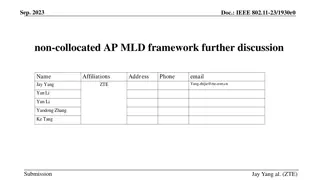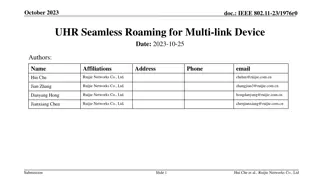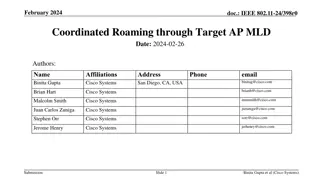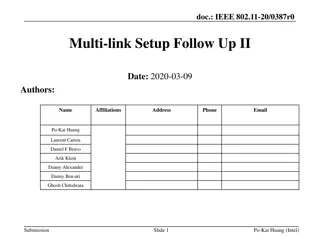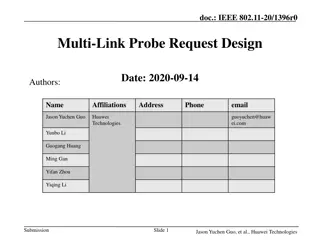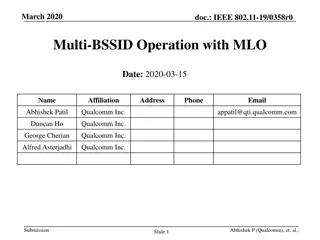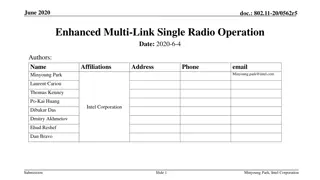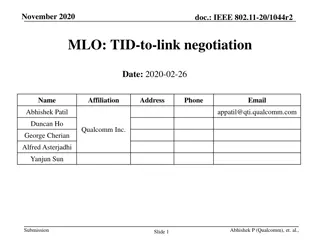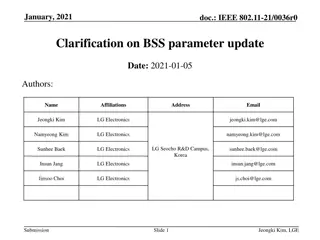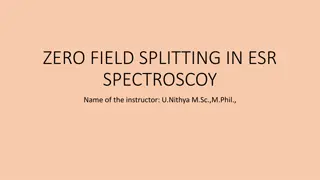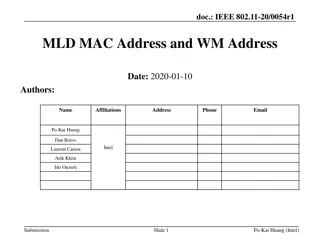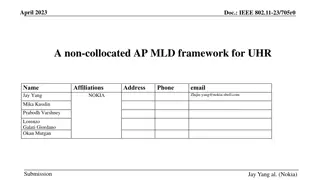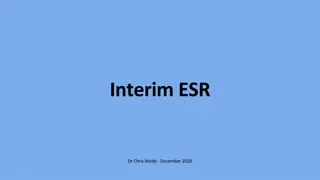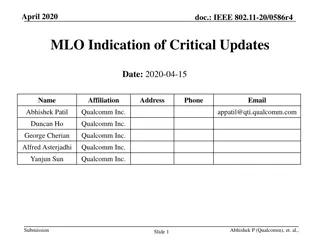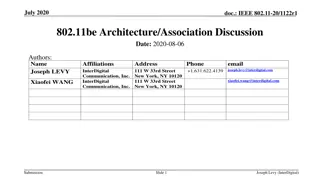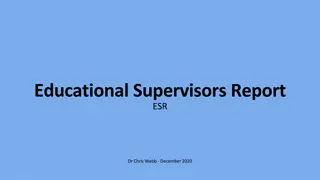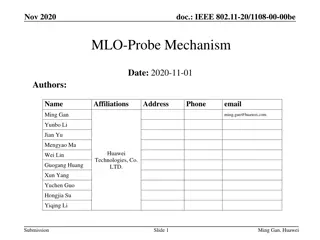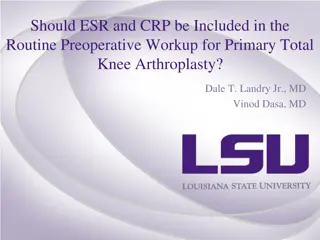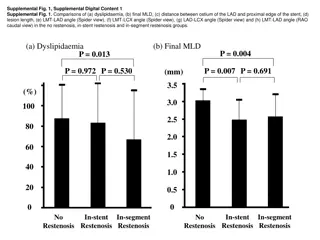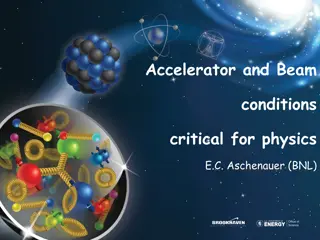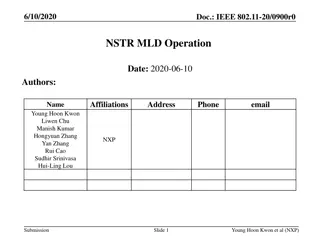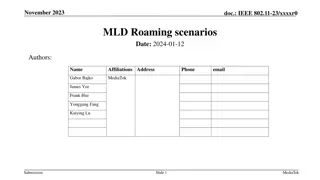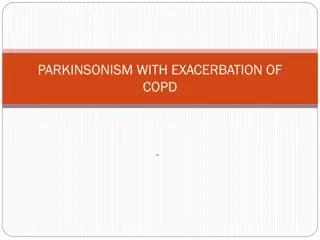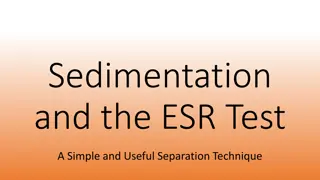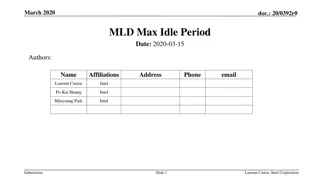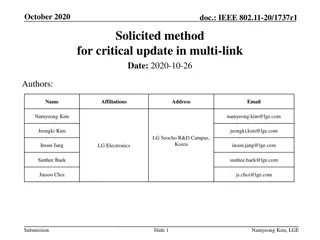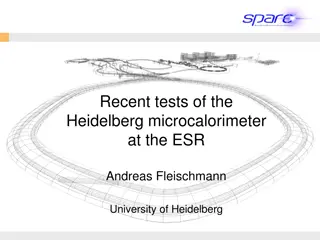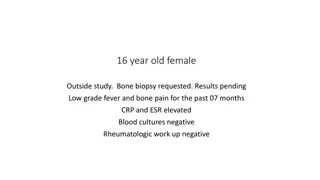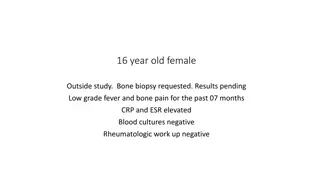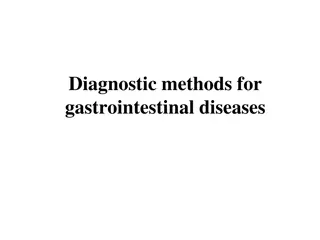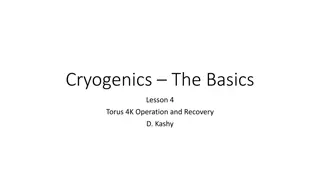Credit Finance Sub-Group and NPRR Updates
Updates from the Credit Finance Sub-Group include discussions on operational NPRRs, new invoice reports, EAL changes, and DC Energy's exposure calculations. The group considered improvements in credit implications, concentration limits, and more. NPRR 1186 was reviewed for enhancements to ESR monito
0 views • 12 slides
Future of FTTR Products: Non-Collocated AP MLD Framework
In September 2023, IEEE 802.11-23/1930r0 discussed the use of non-collocated AP MLD framework in FTTR products for improved user experience. The framework aims to enhance Wi-Fi communication, seamless roaming, and Wi-Fi sensing integration. It simplifies AP MLD design, supports multiple links for in
6 views • 18 slides
Seamless Roaming for Multi-link Device in IEEE 802.11-23
Seamless Roaming scheme for non-collocated AP MLD in IEEE 802.11-23 aims to enhance roaming efficiency by utilizing multi-link operation. It addresses issues of data interruption and time wastage during traditional roaming processes. The mechanism involves sharing PTKs among non-AP STAs and storing
1 views • 14 slides
Coordinated Roaming Proposal for IEEE 802.11 Networks
This document presents a proposal for coordinated roaming through target AP MLD in IEEE 802.11 networks to address connectivity disruptions due to sudden RSSI drops or STA transition scenarios. The solution aims to ensure data continuity, preserve context, and minimize data loss during roaming hando
0 views • 11 slides
Progress on IEEE 802.11 Multi-link Setup
Significant developments have been made in the multi-link setup within the IEEE 802.11 framework. The focus is on allowing only one STA in the MLD framework, differentiation with STA-level associations, and the rationale behind restricting to one STA. Proposals for defining multi-link devices and re
0 views • 12 slides
Design Considerations for Multi-Link Probe Requests in IEEE 802.11-20
This document discusses the design considerations for multi-link probe requests in the IEEE 802.11-20 standard. It covers passive and active scanning methods, MLD-based versus link-based approaches, and probing for multiple BSSIDs. The focus is on enhancing efficiency and reducing frame bloating in
0 views • 16 slides
Multi-BSSID Operation with MLO Overview and Signaling Considerations
The document discusses the integration of Multiple BSSID set feature and Multi-Link Operation (MLO) in IEEE 802.11 networks. It delves into the setup of virtual Access Points (APs) on the same device with distinct attributes, the formation of common parameters across APs within an MLD, and the signa
1 views • 13 slides
Enhanced Multi-Link Single Radio Operation Proposal
The proposal discusses an enhanced mode of operation for single radio non-AP MLDs to enable multi-link operation, improving throughput and reducing latency. It addresses challenges in busy network environments, aiming to achieve low latency benefits similar to concurrent dual radio setups. The propo
0 views • 22 slides
IEEE 802.11-20/1044r2 TID-to-Link Negotiation Proposal
Proposal for a simple mechanism to negotiate TID-to-Link mapping between an Access Point MLD and a non-AP MLD to aid in traffic separation, latency-sensitive flow management, and overall channel access optimization. The negotiation process involves consideration of traffic profiles, load balancing,
1 views • 6 slides
Discussion on IEEE 802.11be MLD Architecture Alignment
IEEE 802.11 TGbe is exploring MLDs within the 802 architecture, focusing on aligning MLD operations with existing 802.11 features for enhanced compatibility. The MLD architecture aims to facilitate the flow of data between MAC SAPs and PHY SAPs, extending the current framework for APs and non-AP STA
1 views • 23 slides
IEEE 802.11-21/0036r0 BSS Parameter Update Clarification
This document delves into the IEEE 802.11-21/0036r0 standard, specifically focusing on the BSS parameter update procedure within TGbe D0.2. It details how an AP within an AP MLD transmits Change Sequence fields, Critical Update Flags, and other essential elements in Beacon and Probe Response frames.
1 views • 11 slides
Understanding Zero Field Splitting in ESR Spectroscopy
Zero field splitting in ESR spectroscopy involves the relaxation times in ESR and how spin-lattice relaxation affects the spectral width. Discover how T1 value and spin lattice relaxation play a crucial role in observing sharp spectrum lines in EPR. Learn about line widths in ESR, spin dilution, and
0 views • 21 slides
IEEE 802.11-2020 Multi-Link Reference Model Discussion
This contribution discusses the reference model to support multi-link operation in IEEE 802.11be and proposes architecture reference models to support multi-link devices. It covers aspects such as baseline architecture reference models, logical entities in different layers, Multi-Link Device (MLD) f
1 views • 19 slides
IEEE 802.11-20/0054r1 MLD MAC Address and WM Address
In the document IEEE 802.11-20/0054r1, the focus is on Multi-Link Framework for MLD address identification and differentiation. It explains the usage of MLD MAC address and STA WM medium address in wireless setups. The document also addresses the need for identifying different MLDs using MAC address
0 views • 16 slides
Improving Latency Performance for Mobile Clients Using Non-Collocated AP MLD Framework
The UHR group aims to enhance latency performance for mobile clients by introducing a non-collocated AP MLD framework. This framework allows seamless transfer of client context between physical APs, improving roaming efficiency and supporting high numbers of links for non-AP MLDs. The proposed solut
2 views • 11 slides
IEEE 802.11-23/1980r1 Coordinated AP-assisted Medium Synchronization Recovery
This document from December 2023 discusses medium synchronization recovery leveraging multi-AP coordination for multi-link devices. It covers features such as Multi-link device (MLD), Multi-link operation (MLO), and Ultra High Reliability (UHR) capability defined in P802.11bn for improvements in rat
0 views • 8 slides
Understanding Erythrocyte Sedimentation Rate (ESR)
Erythrocyte Sedimentation Rate (ESR) is a crucial indicator used in diagnosing and monitoring various health conditions. It measures the rate at which red blood cells settle in a test tube, providing insights into inflammation, infections, anemias, and other diseases. Factors affecting ESR include t
4 views • 24 slides
Understanding Interim ESR Reviews in Medical Training
Trainees without progress concerns undergo light touch interim reviews instead of full ESRs midway through the year. Interim ESR reviews are crucial between annual ESRs when no ARCP is scheduled. The process assesses progress and ensures support. However, an interim ESR should not be done under cert
0 views • 10 slides
IEEE 802.11-20/0586r4 MLO Indication of Critical Updates
The document discusses the need for a mechanism in the MLO framework to enable non-AP MLDs to receive updates to operational parameters without monitoring all links. It proposes that each AP of an MLD should provide an indication of updates to another AP's operational parameters. It also outlines ho
0 views • 17 slides
IEEE 802.11be MLD Architecture Discussion
The document discusses the architecture of MLD (Multicast and Local Delivery) within the IEEE 802.11be framework. It highlights how MLD will align with existing 802.11 basic architecture, emphasizing the management of access to PHY and media for both AP and non-AP devices. The goal is to integrate M
0 views • 9 slides
IEEE 802.11be MLD Architecture Discussion
This presentation delves into architecture concepts for TGbe MLDs, focusing on AP and non-AP scenarios. It builds upon ideas from previous sessions, exploring topics such as RX/TX MSDU rate limiting, A-MSDU aggregation, packet integrity, and encryption. Implementation choices and legacy operation co
0 views • 15 slides
Understanding the Educational Supervisor Review (ESR) Process in Medical Training
The Educational Supervisor Review (ESR) is a crucial part of medical training mandated by the GMC to assess trainees' progress, provide feedback, and identify training needs. Conducted every six months, ESRs involve assessing capabilities, building a rich evidence portfolio, and informing decisions
0 views • 24 slides
IEEE 802.11-20/1108-00-00be MLO Probe Mechanism in AP MLD
This document discusses the design and implementation of a mechanism for a non-AP STA to send a probe request frame to an AP within an AP MLD, allowing the STA to request a probe response containing information on all APs affiliated with the same MLD as the target AP. It proposes the use of new elem
1 views • 12 slides
IEEE 802.11-22/0349r1 Feb. 2022 Discussion of NSTR and EMLSR
Discussion on the introduction of eMLSR in IEEE 802.11-22/0349r1 compared to other modes like NSTR, with a proposal to make eMLSR support mandatory on AP MLD side due to its significant gains and importance in MLO. The presentation also highlights the performance comparison between NSTR and EMLSR, a
2 views • 12 slides
The Role of ESR and CRP in Preoperative Workup for Total Knee Arthroplasty
Preoperative assessment for primary total knee arthroplasty should consider including ESR and CRP levels as routine tests due to their accuracy in diagnosing periprosthetic joint infection (PJI). Elevated postoperative ESR/CRP levels can serve as predictors of PJI, aiding in prompt diagnosis and tre
1 views • 26 slides
Comparisons of Dyslipidaemia and Lesion Characteristics in Restenosis Groups
This supplemental content presents comparisons of dyslipidaemia, final minimal luminal diameter (MLD), distance between ostium of the LAD and proximal edge of the stent, lesion length, and various angle measurements in different restenosis groups. The findings highlight significant differences in dy
0 views • 4 slides
Understanding Beam Conditions and Effects in Particle Physics Experiments
Critical accelerator and beam conditions for E.C. Aschenauer's physics research at BNL are discussed, including effects on the main detector, consequences of crossing angle adjustments, important particle beam parameters, and the rotation of the ESR reference plane. Detailed information on beam dive
0 views • 8 slides
Enhancing Network Performance with NSTR MLD and SR/eSR MLDs
This document discusses the performance characteristics of Multi-Radio MLD (NSTR MLD) and Single-Radio/Enhanced Single-Radio MLDs (SR/eSR MLDs) in various operation scenarios. It highlights the strengths and weaknesses of NSTR MLDs and proposes ways to improve their operation efficiency. Additionall
0 views • 16 slides
Effective Strategies for ARCP Success in Medical Training
Discover essential insights on navigating ESR in a structured manner, making informed decisions, avoiding common pitfalls, and understanding ARCP panel expectations. Learn how to assess trainees effectively, utilizing evidence-based judgment and concise commentary. Gain valuable tips on reinforcing
0 views • 11 slides
IEEE 802.11-23 MLD Roaming Scenarios
This contribution focuses on discussing MLD roaming scenarios to enable seamless roaming for non-AP MLD STAs, aiming to reduce packet loss and latency during roaming through methods like make before break. Various aspects of Intra V-MLD Roaming architecture are explored, including optimizing data pa
0 views • 17 slides
Understanding Parkinsonism Complicated by COPD Exacerbation in an Elderly Patient
A 76-year-old male with a history of COPD and Parkinsonism presents with breathlessness, cough, and thick white sputum. Laboratory findings show increased TLC, ESR, and Neutrophils. The chest X-ray reveals mild pleural effusion. Smoking is highlighted as a possible cause of COPD exacerbation. The pa
0 views • 12 slides
Understanding Sedimentation and ESR Test in Separation Techniques
Sedimentation is a crucial separation technique where insoluble particles settle out of a solution due to gravity. It plays a vital role in various industries like food, beverage, pharmaceutical, and water treatment. The Erythrocyte Sedimentation Rate (ESR) test, a micro-level sedimentation process
0 views • 13 slides
Proposal to Simplify MLD Max Idle Period for Non-AP MLDs
Proposal presented in March 2020.doc suggests defining the MLD Max Idle Period at the MLD level instead of the STA level for non-AP MLDs. The objective is to indicate to APs through keep-alive frames that the non-AP MLD is still active without needing to tear down multi-link setups. The proposal off
0 views • 4 slides
Solicited Method for Critical Update in Multi-Link Environments
This document discusses a method for obtaining critical update information for Access Points (APs) within the same Multi-Link Domain (MLD) in IEEE 802.11 standards. It introduces the concept of Change Sequence fields in Beacon and Probe Response frames to indicate changes in system information for o
0 views • 18 slides
Recent Tests of Heidelberg Microcalorimeter and New National Detector Laboratory Initiatives
Recent tests of the Heidelberg microcalorimeter at the ESR Andreas Fleischmann University of Heidelberg showcase advancements in X-ray photon research with metallic magnetic calorimeters. Additionally, a new initiative is discussed towards establishing a National Detector Laboratory by Thomas Stöhl
0 views • 15 slides
Evaluation of Low-Grade Fever and Bone Pain in a 16-Year-Old Female Patient
A 16-year-old female presented with low-grade fever and bone pain persisting for 7 months. With elevated CRP and ESR levels, a bone biopsy has been requested to investigate the underlying cause. Blood cultures and rheumatologic workup were negative, and results are pending. Further evaluation is ess
0 views • 12 slides
16-Year-Old Female with Bone Pain and Fever: Diagnostic Evaluation
A 16-year-old female presents with low-grade fever and bone pain persisting for 7 months. Elevated CRP and ESR levels, negative blood cultures, and inconclusive rheumatologic work-up prompt a bone biopsy. Results are pending diagnostic investigation and further management for the underlying cause.
0 views • 12 slides
Diagnostic Methods for Gastrointestinal Diseases: A Comprehensive Overview
Explore various diagnostic methods for gastrointestinal diseases, including laboratory investigations, abdominal ultrasound features, and radiology techniques. Learn about the significance of different tests such as ESR, blood count, liver tests, and abdominal ultrasound in diagnosing conditions aff
0 views • 40 slides
Understanding Cryogenics: Torus 4K Operation and Recovery
This lesson delves into the intricate details of Torus 4K operation and recovery in cryogenics. Topics covered include supply from ESR main compressors, cold box, valve box, helium distribution, supercritical helium flow, back pressure control, and more. Special notes emphasize the importance of ver
0 views • 31 slides
Understanding Cryogenics: LN2 Operation in Hall B
Dive into the basics of operating liquid nitrogen (LN2) systems in Hall B, focusing on topics such as LN2 supply, distribution boxes, ESR valve control, and system geometries. Learn about the critical components and operational considerations for efficient LN2 utilization.
0 views • 19 slides

